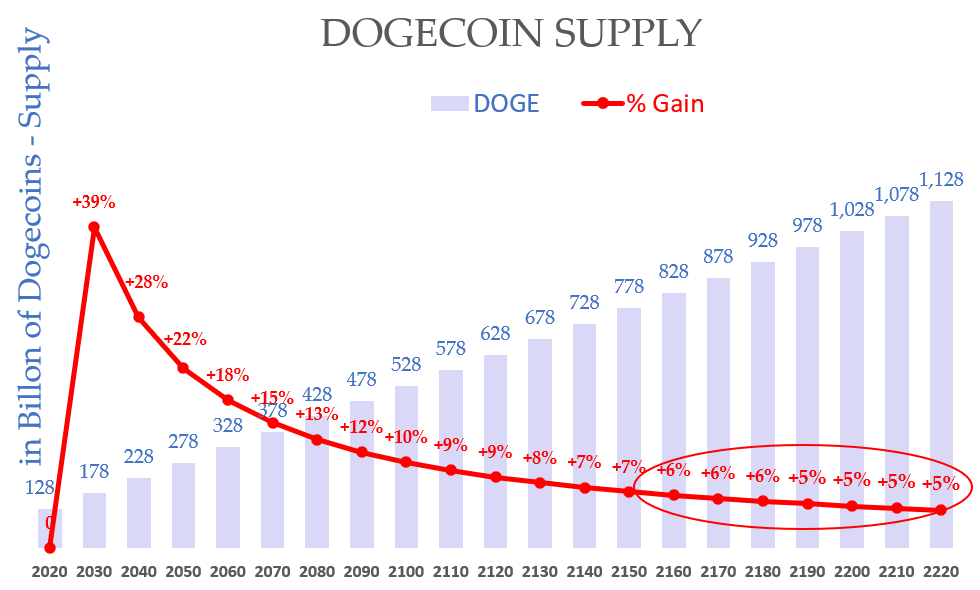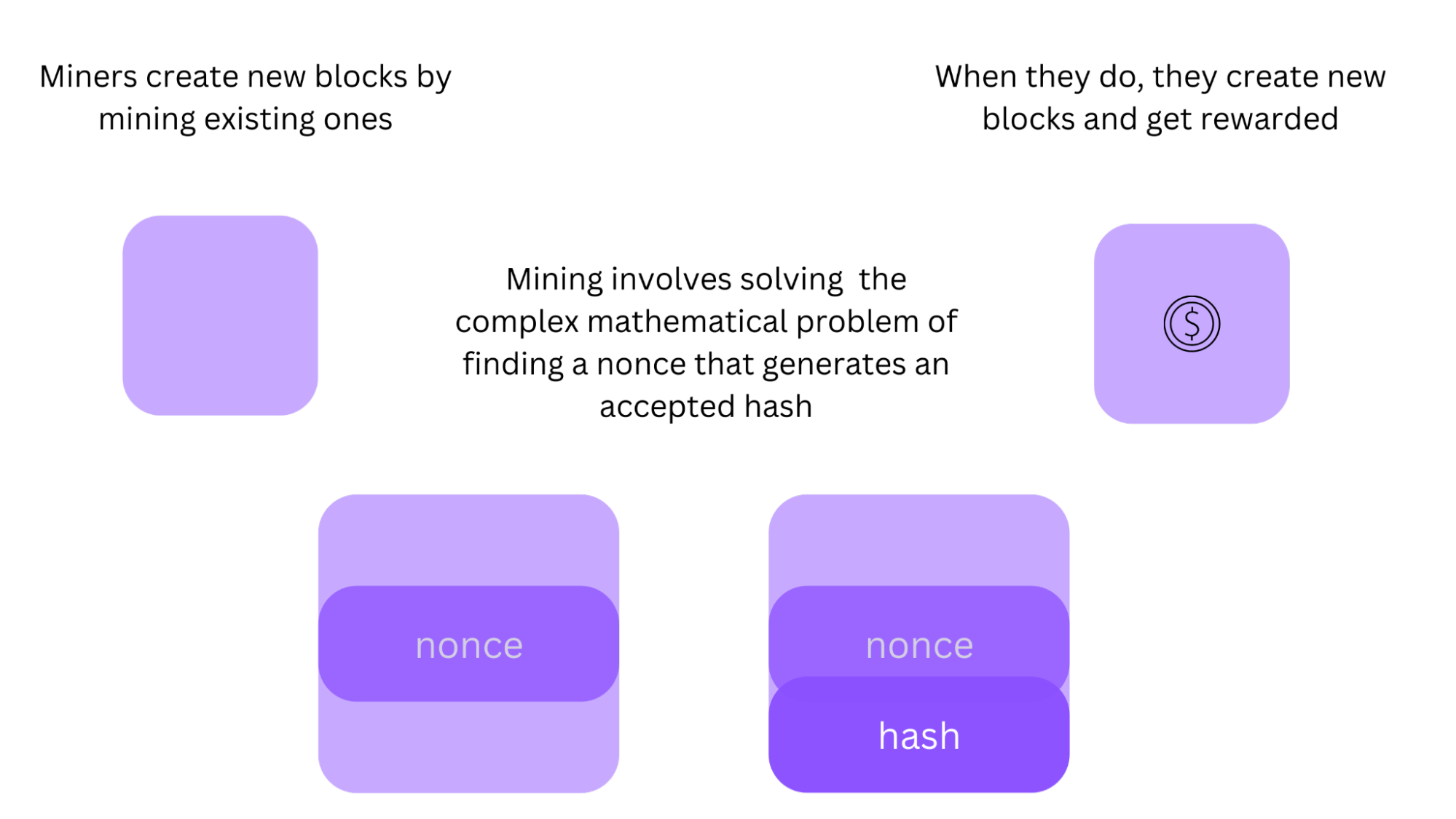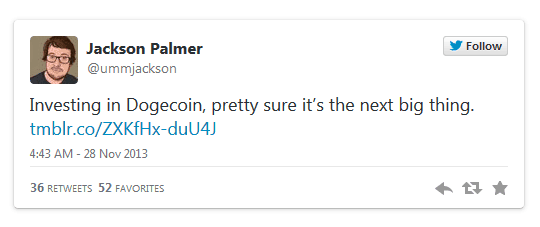What is Dogecoin? An introduction to DOGE
While Dogecoin started as a meme coin, it is now a widely-used cryptocurrency that even its critics can't ignore. We explain the altcoin's rise.
By Geoffrey Lyons

When Elon Musk, played fictional financial advisor Lloyd Ostertag on Saturday Night Live's Weekend Update, he was asked this simple question:
“What is Dogecoin?”
Ostertag replies that it's a that started as a joke based on an internet meme, but has since taken off. It's fully digital, has an ever-increasing circulating supply of 141 billion coins, and may just be the future of currency.
“Okay,” comes the puzzled response, “but what is Dogecoin?”
For many, this meme-inspired altcoin stubbornly remains an enigma. If it's special, it's unclear why. If it's valuable, it's unclear how. And if it's a joke, then what's the punchline?
This article dispels some of the mystery shrouding Dogecoin (DOGE) by explaining its origins, its rise in popularity inside the crypto world and out, and where it can be purchased.
What is Dogecoin?
Dogecoin is a cryptocurrency that started as a meme coin joke but has since become a significant asset in the digital currency ecosystem. Like other cryptocurrencies, it can be held as a store of value or used as a currency by accepted providers.
Technically speaking, Dogecoin is a fork of Litecoin that runs on the Scrypt mining algorithm. Mining Dogecoin is actually much easier and faster than some of its competitors, which gives it an edge for making transactions.
Whereas new blocks are confirmed every ten minutes on the Bitcoin blockchain, for example, it takes just a minute to confirm a Dogecoin block. This means that Dogecoin transactions are 10 times faster than Bitcoin, and 2.5 times faster than Litecoin.

Another feature that distinguishes Dogecoin is its inflationary nature. Whereas Bitcoin has a hard cap on the amount of coins (21 million) that are issued, DOGE has a theoretically unlimited supply.
Some say this makes it ideal as a currency, for two reasons: firstly, because its inflation rate will trend in a predictable manner, and secondly, because there's less incentive to “hodl." In general, inflationary coins are better spent than hoarded.

How does Dogecoin work?
Like most cryptocurrencies, Dogecoin operates on a blockchain, which is a decentralized ledger that verifies and records all transactions. However, the Dogecoin blockchain is based on a simplified version of the blockchain technology used by Bitcoin and other cryptocurrencies.
Dogecoin uses a Proof of Work (PoW) consensus algorithm in which miners solve complex mathematical equations to validate transactions and add them to the blockchain. In return, they receive their block reward in the form of newly-created Dogecoin tokens.

Key features of Dogecoin
- Inflationary nature: Unlike the deflationary and capped supply nature of Bitcoin, Dogecoin (DOGE) has no maximum supply limit. This means that an unlimited number of new Dogecoins are continuously created through mining, making it an inflationary cryptocurrency.
- Fast transaction speed: Dogecoin boasts a 10x faster block time compared to Bitcoin, which means transactions are confirmed much more quickly. This makes DOGE an attractive choice for everyday transactions.
- Low transaction fees: The cost of sending Dogecoin is usually very low, around a fraction of a cent. This makes DOGE an economical choice for users, especially for microtransactions.
- Active community: Dogecoin has a vibrant and engaged community of supporters and enthusiasts. The Dogecoin community (such as the r/dogecoin Dogecoin Reddit community) has been key in promoting the cryptocurrency, and boasts an impressive history of contributing to various charitable causes.
Why was Dogecoin created?
Dogecoin was created in December 2013 by software engineers Billy Markus and Jackson Palmer, mostly in jest. But their playful approach quickly attracted a community of enthusiasts and made Dogecoin stand out in a sea of more serious digital currencies.
It all started with a tweet from Palmer. At the time, altcoins were springing up left and right, which he found excessive.
There was also an internet meme of a Shiba Inu dog called ‘Doge' that was making the rounds, which he found funny. So naturally, Palmer put the two together: he bought the domain “dogecoin.com,” photoshopped Doge on a gold coin, and tweeted “Investing in Dogecoin, pretty sure it's the next big thing.”

“It's weird that something I made in a few hours is now part of internet culture,” said Dogecoin co-creator Billy Markus to Bloomberg in 2021. “It feels silly, but there's this huge upwelling behind it.”
It was a joke. Not only was it a joke, it was just a joke -- there wasn't an actual cryptocurrency behind the name. It's only when Markus saw the tweet and contacted Palmer that the two joined forces and created the coin, and even this was tongue-in-cheek.
“I just wanted to show that I wasn't a noob and I could actually make coins,” Markus told Money Inc. “This wasn't some weird master plan that we had.”
Why is Dogecoin popular?
Dogecoin's meteoric rise can be attributed to several factors, including its viral memeability, endorsements from popular figures, and a vocal community.
The power of memes
One of the most remarkable aspects of how Dogecoin rose to popularity is its use of internet culture and memes. The Shiba Inu dog, known as the "Doge" meme, serves as the face of the cryptocurrency. This meme was already well-known on the internet, and the use of such a friendly and humorous mascot set Dogecoin apart from the more serious and technical world of other cryptocurrencies.

The internet's fondness for the Shiba Inu dog led to widespread adoption of Dogecoin, as people found it relatable and fun. Memes, which are often funny and shareable, played a significant role in Dogecoin's social media presence, turning it into a viral sensation.
This organic and grassroots marketing strategy is something that other cryptocurrencies have struggled to replicate, though the popularity of the meme coin led to the creation of Dogecoin spinoffs like Shiba Inu (SHIB), and the entire SHIB ecoystem.
Celebrity endorsements
Dogecoin's popularity has also received a boost from celebrity endorsements. Public figures like Elon Musk, Snoop Dogg, and Mark Cuban have publicly supported and discussed Dogecoin on social media and in interviews. These endorsements have not only brought more attention to the cryptocurrency, but also increased its legitimacy in the eyes of the public.
Elon Musk has been particularly influential in shaping the Dogecoin narrative. His tweets and statements about the coin over the years have led to significant price fluctuations and increased interest in the cryptocurrency.
In October 2022, for instance, the Dogecoin prices rose by 35% in less than a week, upon news of Musk's impending purchase of Twitter. And after the purchase was completed, he even temporarily changed the Twitter logo to the Doge logo.

In fact, Musk is viewed to have so much influence over Dogecoin, that a $258 billion lawsuit was brought against him for influencing the price of DOGE.
Although such celebrity endorsements can bring awareness, they can also be self-serving and speculative, so they should not be the main factor when deciding whether to buy Dogecoin.
The Dogecoin community
One of the most endearing aspects of Dogecoin is its community. But in addition to being vocal advocates for the cryptocurrency, the Dogecoin community also advocates for several charitable initiatives.
Dogecoin has been used to fund clean water projects in Africa, support disaster relief efforts, and even sponsor sports teams. The "Doge4Water" campaign, for example, raised over 40 million Dogecoins to provide clean drinking water to communities in need.

The Dogecoin community's spirit of giving and communal support has made Dogecoin a symbol of positivity in the world of cryptocurrencies. It demonstrates that crypto can be more than just speculative assets; they can also be used for social good.
Use cases and acceptance
While Dogecoin started as a meme, it has grown to have real-world use cases that legitimize DOGE as a form of digital currency.
Dogecoin has been used to tip content creators on social media, make donations to charitable causes like Charity: Water and the American Cancer Society, and even purchase goods and services from a growing number of merchants (like Tesa) who accept Dogecoin.
Investment and speculation
As with many cryptocurrencies, Dogecoin has attracted investors and speculators looking to capitalize on its drastic price movements. Its price has experienced significant volatility, with both sharp increases and declines. In January 2021, its price jumped by 339% in a day, thanks to comments made by Mr. Musk.
Some lucky investors have made substantial profits by trading Dogecoin, though the majority has actually faced losses. It's essential to be aware of the risks and conduct thorough research before investing in any cryptocurrency, including Dogecoin.
Did you know? You can pay with Dogecoin
Dogecoin risks and other considerations
Before deciding to invest in Dogecoin, users should take into account the potential risks posed by the popular altcoin:
Market volatility
Dogecoin, like many other cryptocurrencies, is known for its price volatility. The DOGE price can rise and fall dramatically in a short period, which can result in significant gains as well as losses.
Lack of regulation
The cryptocurrency market is still relatively unregulated compared to traditional financial markets. This lack of oversight can lead to potential risks, including fraud and market manipulation.
Long-term viability
While Dogecoin has gained popularity, its long-term viability is still uncertain. The cryptocurrency market is constantly evolving, and new technologies and coins are emerging. It remains to be seen if DOGE can sustain its success over the coming years.
As we've covered, there are many reasons why DOGE has taken off the way it has. Elon Musk is one of them. Gene Simmons is another. But perhaps the biggest driver has been Reddit and the Doge community in general.
Everyone has witnessed how “the front page of the internet” can drive real world trends. In 2021, the GameStop short squeeze that sent tidal waves through financial markets was due entirely to a little-known subreddit called r/wallstreetbets.
“This wasn't some weird master plan that we had.” - Billy Markus, Dogecoin co-creator
It's no different with DOGE, which has a loyal base on subreddits such as r/dogecoin and r/SatoshiStreetBets. TikTok and Twitch have played their roles, too. And so have Snoop Dogg, Jake Paul, and Mark Cuban.
But the important question is not who or what is driving Dogecoin, but why? Is it serious or is it still just a joke?
The answer may be that it doesn't really matter -- enough people are taking it seriously that even if it's still a joke for some (especially its critics), there's no denying its value.
Dogecoin has sustained its ranking as a top 10 cryptocurrency by market capitalization for the last few years. As the saying goes, “the numbers speak for themselves.”

Another explanation is that DOGE is less of a joke with time. An interesting argument that proponents are using in Dogecoin's favor is a theory called the “Lindy Effect”, which states that the life expectancy of something non-perishable (e.g., a cryptocurrency) increases the longer it has been around.
In other words, as long as people know about it, Dogecoin is here to stay.
According to statistician Nassim Nicholas Taleb, “If a book has been in print for forty years, I can expect it to be in print for another forty years.” The same may yet be true for Dogecoin.
Where to buy Dogecoin
You can buy Dogecoin via MoonPay or through any of our partner wallet applications with a credit card, bank transfer, Apple Pay, Google Pay, and many other payment methods. Just enter the amount of DOGE you wish to purchase and follow the steps to complete your order.
Users can also top up in euros, pounds, or dollars and use MoonPay Balance when buying Dogecoin (DOGE) and other meme coins. Use your balance to enjoy lower transaction fees, quicker processing times, and better approval rates.
Swap Dogecoin for more tokens
Want to exchange Dogecoin for other cryptocurrencies like Ethereum and Bitcoin? MoonPay allows you to swap crypto cross-chain with competitive rates, directly from your non-custodial wallet.






